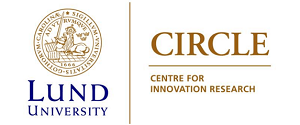No 2015/16: The Innovation Union Scoreboard is Flawed: The case of Sweden – not being the innovation leader of the EU
Charles Edquist () and Jon Mikel Zabala-Iturriagagoitia ()
Additional contact information
Charles Edquist: CIRCLE, Lund University
Jon Mikel Zabala-Iturriagagoitia: Deusto Business School, Deusto University
Abstract: According to the Innovation Union Scoreboard, published by the European Commission every year, Sweden has been, and still is, an innovation leader within the EU and one of the most innovative countries in Europe. In the Innovation Union Scoreboard 2014 (European Union, 2014: 5), Sweden has the top position (ranked number 1) of all EU28 Member States in what is called “EU Member States’ Innovation Performance”. In the ranking there are 10 countries between Sweden and the EU average. This analysis is based on the ranking provided by one single composite indicator (SII or Summary Innovation Index), based on 25 separate indicators.
In this paper we argue that the SII provided by the Innovation Union Scoreboard is highly misleading. The data (the 25 separate indicators) that constitute this composite innovation indicator need to be analyzed much more in depth in order to reach a correct measure of the performance of an innovation system. We argue that input and output indicators need to be considered separately and measured individually and as two groups of indicators. Thereafter we compare the input and output indicators with one another (as is normally done in productivity and efficiency measurements). The outcome of this is a relevant and better measure of innovation performance.
In this paper, the performance of the Swedish national innovation system is analyzed by using exactly the same data as is used by the Innovation Union Scoreboard 2014. We analyze the relative position of Sweden regarding both input and output indicators, concluding that Sweden’s position as an innovation leader within the EU must be reconsidered. A theoretical background and reasons for selecting the indicators used is given and a new position regarding Sweden’s innovation performance compared to the other countries is calculated.
Our findings show, that Sweden remains in a high position for the innovation input indicators, ranked number 1. However, with regard to innovation output, Sweden is ranked number 10. In other words, about a third of all European Union 28 Member States have a higher innovation output than Sweden. To estimate the efficiency or productivity of the Swedish innovation system, inputs and outputs must be related to each other. When doing so, we reach the conclusion that Sweden is ranked number 24 of EU28 Member States. This finding is then discussed and we also discuss which countries would be relevant for Sweden to compare (benchmark) its innovation system with.
The conclusion is that Sweden, based on our calculations, can certainly not be seen as an innovation leader in Europe. This means that the Innovation Union Scoreboard is flawed and may therefore mislead researchers, policy-makers, politicians as well as the general public – since it is widely reported in the media.
Keywords: Innovation system; innovation policy; innovation performance; Sweden; indicators; input; output
54 pages, April 29, 2015
Full text files
201516_Edquist_ZabalaIturriagagoitia.pdf
Questions (including download problems) about the papers in this series should be directed to Torben Schubert ()
Report other problems with accessing this service to Sune Karlsson ().
RePEc:hhs:lucirc:2015_016This page generated on 2024-09-13 22:16:05.

